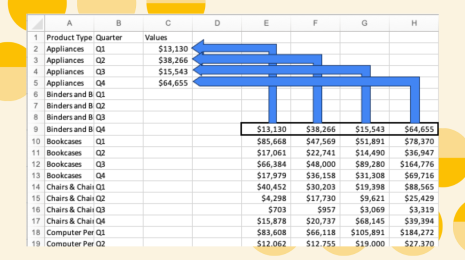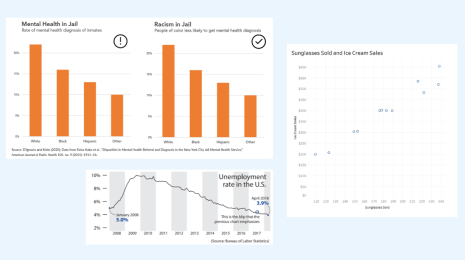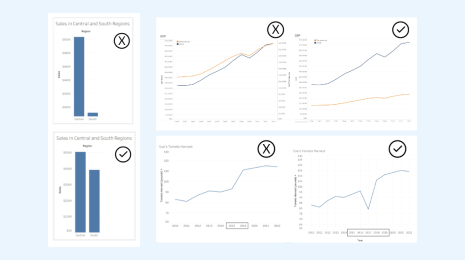Why Your Workforce Needs Data Literacy
Editor's note: This article originally appeared in Forbes.
Organizations that rely on data analysis to make decisions have a significant competitive advantage in overcoming challenges and planning for the future. And yet data access and the skills required to understand the data are, in many organizations, restricted to business intelligence teams and IT specialists.
As enterprises tap into the full potential of their data, leaders must work toward empowering employees to use data in their jobs and to increase performance—individually and as part of a team. This puts data at the heart of decision making across departments and roles and doesn’t restrict innovation to just one function. This strategic choice can foster a Data Culture—transcending individuals and teams while fundamentally changing an organization’s operations, mindset, and identity around data.
Organizations can also instill a data culture by promoting data literacy—because in order for employees to participate in a data culture, they first need to speak the language of data. More than technical proficiency with software, data literacy encompasses the critical thinking skills required to interpret data and communicate its significance to others.
25%
of employees feel fully prepared to use data effectively
Many employees either don’t feel comfortable using data or aren’t completely prepared to use it. To best close this skills gap and encourage everyone to contribute to a data culture, organizations need executives who use and champion data, training and community programs that accommodate many learning needs and styles, benchmarks for measuring progress, and support systems that encourage continuous personal development and growth.
Here’s how organizations can improve their data literacy with a four-step action plan:
1. Lead
Data literacy involves more than having a set of skills. It’s a critical part of a culture shift toward data-driven decision making, and business leaders have key roles to play as sponsors.
Executives
Employees take direction from leaders who signal their commitment to data literacy, from sharing data insights at meetings to participating in training alongside staff.
“It becomes very inspiring when you can show your organization the data and insights that you found and what you did with that information,” said Jennifer Day, vice president of customer strategy and programs at Tableau. “It takes that leadership at the top to make a commitment to data-driven decision making in order to really instill that across the entire organization.”
To develop critical thinking around data, executives might ask questions about how data supported decisions, or they may demonstrate how they used data in their strategic actions.
And publicizing success stories and use cases through internal communications draws focus to how different departments use data.
Frontline managers
Managers have a pivotal role in instilling the day-to-day discipline to use data. They can do this by setting clear team goals for applying data, improving metrics through data-centric decision making, and holding their teams accountable for these defined targets.
Some managers might use dashboards showing participation in training programs or their team’s most commonly accessed data sources to understand how employees use data and to help create individual development plans. Making successful data use a key objective in performance reviews can also incentivize employees to pick up new skills.
And managers who attend training sessions with their teams can learn different ways of thinking about data, which enables them to make suggestions and encourages staff to create specific methods for effective data use.
HR leaders
Recruiting for data skills and supporting the development of employees are equally vital to having a data-literate workforce.
“Human resources to me is one of the most critical roles with the most impact,” said Sarah Nell-Rodriquez, principal high-touch success manager at Tableau.
HR managers can ensure that data literacy initiatives upskill employees in critical business areas, address employees’ diverse needs, and implement bespoke programs. They can advocate for new roles that develop internal communities and appoint employees who are data champions to help colleagues incorporate data into their daily work.
“Leaders can…make sure that people know that data is a part of their culture. ...It’s part of their mission of how they want to move their business forward.”—Sarah Nell-Rodriquez, Principal High Touch Success Manager, Tableau
2. Train
By offering customized paths based on job experiences and roles, a successful training program should meet all employees where they are.
Self-service learning
This approach is “for the people who just need to solve a problem—get in and get out,” said Ravi Mistry, one of about three dozen Tableau Zen Masters, professionals selected by Tableau who are masters of the Tableau end-to-end analytics platform and now teach others how to use it.
Reference guides for digital processes and tutorials for specific tasks enable people to bridge minor gaps in knowledge, minimizing frustration and the need to interrupt someone else’s work to ask for help.
In addition, forums moderated by data specialists can become indispensable roundups of solutions. Keeping it all on a single learning platform, or perhaps your company’s intranet, makes it easy for employees to look up what they need.
Role-based training
Data literacy training for specific jobs empowers employees to work with the unique data they encounter.
“Not everyone wakes up wanting to do data analysis,” Mistry said. “What you really want to do is just help them do their jobs better.” Companies might offer instructor-led and self-paced training courses or one-off sessions like live webinars.
Material that invites continuous learning ensures that employees’ skills stay relevant as technology and business needs evolve. Team training courses can improve how employees use data in collaborative workflows. Meanwhile, cross-department problem-solving workshops promote the idea that data-driven decision making is important for the business as a whole and for all individual contributors.
Advanced skill development
For employees who work with data and analytics more often, deeper data literacy education or even internal and external certifications can improve their productivity and foster innovation while helping to develop or incentivize more advocates and mentors.
21%
of employees are confident in their data literacy skills
Workshops or boot camps offer an immersive education in a specific software tool and demonstrate how to use technology to deliver unique insights. More data-experienced employees might embark on formal training programs delving into skills in analytics and statistical concepts.
“What you want to do is show employees how technology, data … can help them do their job better and help them almost fall in love with what they're doing.”—Ravi Mistry, Tableau Zen Master
3. Measure
Setting targets for data literacy based on your organization’s business model helps quantify the impact of data culture initiatives.
Success indicators
Performance metrics are critical indicators of how well a data literacy initiative is working. Identify which metrics need to improve as data use increases and assess progress at regular intervals to know where to tweak your training program.
Having the right learning targets will improve data literacy in areas that boost business performance. And quantifying the business value generated by data literacy programs can encourage buy-in from executives.
Ultimately, collecting metrics, use cases and testimonials can help the organization show a strong correlation between higher data literacy and better business outcomes.
Data-skills assessments
Using self-reporting or formal evaluations to assess the data literacy of individuals enables companies to know where support is or isn’t needed—or even what solutions may help. Dashboards can be useful to show managers the data sources that employees use and can also reveal strengths and weaknesses in data processes.
“Having a formal education program in place is incredibly important, because any formal education is going to include assessments,” Nell-Rodriquez said. “That’s going to give you a prescribed learning path based off of where employees need to go.”
4. Support
Data literacy is an ongoing effort. To stay motivated and continue learning, employees need access to experts, intuitive software, and a supportive community.
Knowledge curators
Enlisting data specialists like analysts to showcase the benefits of using data helps make data more accessible to novices. Mistry, the Tableau Zen Master, referred to analysts who function in this capacity as “knowledge curators” guiding their peers on how to successfully use data in their roles. “The objective is to make sure everyone has a base level of analysis that they can do,” he said. This is a shift from traditional business intelligence models in which analysts and IT professionals collect and analyze data for the entire company.
Internal data experts can also offer office hours to help employees complete specific projects, troubleshoot problems, and brainstorm different ways to look at data.
Intuitive software
The right data technology solutions for a company accommodate different job requirements and skill levels, empowering everyone to access, analyze, and share data—and then deeply explore how it supports their work.
Great software will detect what users are trying to do and prompt them with logical next steps without interrupting the flow of work.
Data communities
Networks of engaged data users create an environment where people can immerse themselves in the language of data.
The best data communities build enthusiasm through programs like internal competitions and lunch-and-learns. External networks that connect companies using the same data tools offer the opportunity for regular events such as data visualization challenges to develop skills and connect with peers. Volunteer projects, such as those that benefit nonprofits, can motivate employees to explore real-world data analysis outside their everyday roles.
When community members exchange learnings, ideas, and successes, they build camaraderie and rally employees around the shared mission of improving the business with data.
“It's really about creating an environment where the importance of data is put at the forefront...where there are ways that your employees can get the skills they need to go further.”—Jennifer Day, Vice President, Customer Strategy And Programs, Tableau
Start improving data literacy in your workforce
What’s most effective depends on the company and its workforce: The right data literacy program will implement training, software tools, and digital processes that motivate employees to continuously learn and refine their skills, while encouraging data-driven thinking as a core practice.
For more information on how you can improve data literacy throughout your organization, read these resources:








